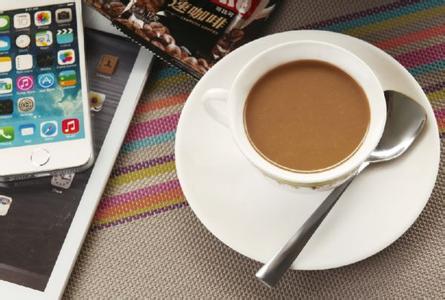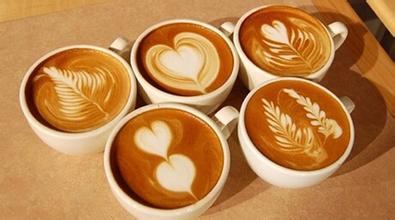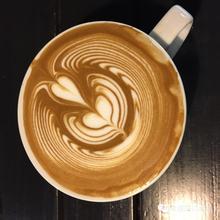Introduction to the characteristics of coffee flavor and taste in Valenford Manor, Jamaica, which is full of fruit flavor.
Since the late 16th century, Jamaica has been attacked many times by pirates from France, England and Holland. In May 1655, a British fleet led by William Bing and Robert Venables captured Jamaica. They immediately invited pirates to the island port of Port Loire to help defend against possible Spanish counterattacks. In 1657 and 1658, Spanish counterattacks from Cuba were unsuccessful.
In 1670, Spain formally ceded Jamaica and other places to Britain according to the Treaty of Madrid. The British immediately used Jamaica as a base for their piracy. Before Loire Port was destroyed by an earthquake in 1692, it became the "capital" of Caribbean pirates. Since then, the British built Kingston City and gradually built it into the central city of Jamaica.
Bamboo Street, Jamaica
Bamboo Street, Jamaica
In the 150 years since 1692, Jamaica has become a world-famous producer of sugar, rum and coffee. [4]In order to maintain a large number of plantations, Britain established the Royal African Company in 1672.
Jamaica is located in the northwest of the Caribbean Sea, located at 17.42 degrees north latitude 18.31 degrees west longitude 76.11 degrees to 78.22 degrees west longitude, is an island country. [1]Jamaica Island is 234 km long from east to west and 82 km wide from north to south. Its territory covers an area of 11420 square kilometers, of which 10991 square kilometers are land. To the east across the Strait of Jamaica, opposite Haiti, about 140 km north of Cuba. It is the third largest island in the Caribbean and has a coastline of 1220 kilometers. Jamaica is the third largest country in the West Indies after Cuba and Haiti. [2]
terrain
Coastal areas are alluvial plains. For example: Guanea Plain; mountains in the east, hills and limestone plateaus in the middle and west. Karst landforms developed, lack of surface runoff, many caves. [2]
climate
Tropical rain forest climate. May to June and September to November are rainy seasons every year, with the most showers in January and May. December to March of the following year is the dry season, and the weather turns cool. 6-11 The half year at the end of the month is a period of frequent hurricanes and tropical storms, often hit by hurricanes. Rainfall is abundant in the central and northern regions, the climate is generally between 22-32 degrees, and the annual average temperature is 27 degrees. [6]
resources
Jamaica's resources mainly include bauxite, with reserves of about 2.5 billion tons, ranking fourth in the world, of which 1.5 billion tons can be mined and 15 million tons of bauxite can be produced annually, second only to Australia. [2]Other rich resources include copper, iron, lead, zinc and gypsum. Forest area 265,000 hectares
When we arrived in Jamaica, our eyes immediately lit up because it produced the best "Jamaica Blue Mountain Coffee" in the world. We absolutely believe that Jamaica Blue Mountain Coffee is the best coffee, it has a good balance of acid, sugar, alcohol and bitterness, it tastes fragrant and tastes very smooth; however, it is too expensive, and although it is worth trying, there is no need to be fascinated by it. Because other selected coffees also have their own characteristics, and taste delicious, the price is reasonable, this is the good coffee in our life.
The earliest "Jamaica Blue Mountain" refers to the coffee produced by "Wallenford Farm" and "Silver Hill Farm", with the former having the best quality; today's "Jamaica Blue Mountain" refers to coffee beans grown in the Blue Mountain area (more than 1000 meters high) east of Kingston, the capital of Jamaica. Now the largest estate in the country, M.B.C. F is printed on its barrels, and its products are often found in Taiwan. Jamaica Blue Mountain is a very strict quality control, by the government "Coffee Industry Council" certification work.
Coffee beans generally grown at low altitudes and other regions can only be called "Jamaica mountain beans" or "Jamaica washed beans." Compared with Jamaica Blue Mountain, the flavor is much different. However, these producing areas are twice the area of the real Blue Mountain region and account for 75% of the country's production. Therefore, when buying Jamaica coffee, don't think that you have bought Blue Mountain coffee.
Because Jamaica Blue Mountain is so famous, there are fake Blue Mountain coffee on the market, or simply called "Blue Mountain Coffee". Basically, this is a comprehensive product prepared by the store itself. There may be a real Jamaica Blue Mountain bean. Blue Mountain coffee is the most superior coffee in the world. The weather, geological structure and terrain of Jamaica jointly provide an ideal place. Ridges running through Jamaica extend to the east of the island, and the Blue Mountains rise to more than 2100 meters. The weather is cool, foggy and rainy frequently. Use this rich soil to harmonize with rainwater. Here, coffee trees are grown in a mixed cropping system, alongside banana and avocado trees on terraces. Some small farms are also planted. But even the region's largest planters are small-scale farmers by international standards, many of them smallholders whose families have been working for two centuries. The coffee industry in Jamaica faces a number of problems, such as the impact of hurricanes, increased labour costs and difficulties in mechanising terraces. Many small estates and farms are difficult to rationalize.
Since Japan has always invested in Jamaica coffee industry, Blue Mountain coffee is mostly controlled by the Japanese, and they have also obtained the right of first refusal to buy Blue Mountain coffee. In 1992, Jamaica sold 688 tons of Blue Mountain coffee to Japan, 75 tons to the United States and 59 tons to Britain. 90% of Blue Mountain Coffee is purchased by Japanese. Since the rest of the world can only get 10% of Blue Mountain coffee, Blue Mountain coffee is always in short supply regardless of price.

Important Notice :
前街咖啡 FrontStreet Coffee has moved to new addredd:
FrontStreet Coffee Address: 315,Donghua East Road,GuangZhou
Tel:020 38364473
- Prev

Delicious Jamaica Cliff Manor Coffee Flavor Characteristics
(1) Jamaica Labour Party (JLP): the ruling party. It was established in July 1943. The Party Constitution stipulates that the Party shall be founded on healthy Christian principles and uphold the highest ideal of democracy. Objectively inclined to protect the interests of workers and social weak, advocating the maintenance of labor and management of their respective rights and the development of private economy. From 1962 to 1972, 1988
- Next

Introduction to boutique coffee with mellow flavor and taste characteristics of Nicaraguan Joy Manor coffee
Columbus arrived here in 1502 and reached the east coast of Nicaragua. In 1522, Spanish colonists began to conquer the region. The cities of Granada and Leon were founded in 1524. From then on, Nicaragua became a Spanish colony and came under the jurisdiction of the Governor's Office of Guatemala. The city of Leon developed into a political and cultural center; Granada became a commercial and agricultural center. In the later period of colonial rule
Related
- Does Rose Summer choose Blue, Green or Red? Detailed explanation of Rose Summer Coffee plots and Classification in Panamanian Jade Manor
- What is the difference between the origin, producing area, processing plant, cooperative and manor of coffee beans?
- How fine does the espresso powder fit? how to grind the espresso?
- Sca coffee roasting degree color card coffee roasting degree 8 roasting color values what do you mean?
- The practice of lattes: how to make lattes at home
- Introduction to Indonesian Fine Coffee beans-- Java Coffee producing area of Indonesian Arabica Coffee
- How much will the flavor of light and medium roasted rose summer be expressed? What baking level is rose summer suitable for?
- Introduction to the characteristics of washing, sun-drying or wet-planing coffee commonly used in Mantenin, Indonesia
- Price characteristics of Arabica Coffee Bean Starbucks introduction to Manning Coffee Bean Taste producing area Variety Manor
- What is the authentic Yega flavor? What are the flavor characteristics of the really excellent Yejasuffi coffee beans?

